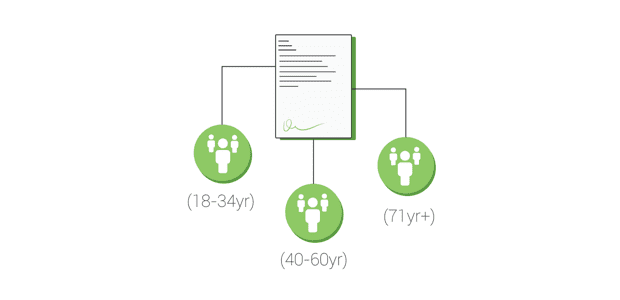Welcome letters are an essential part of any onboarding campaign. They not only allow the financial institution to welcome its new account holders, but welcome letters give financial institutions an opportunity to engage with a customer or member. One way to make the welcome letter more personalized and tailored is by offering it in multiple channels, like print and digital.
According to CreditCards.com, a person’s age plays a role in whether they prefer paper or digital communications from their financial institution. For example, 6% of millennials say they receive a physical bank statement in the mail. That’s compared to 36% of consumers ages 71+ who prefer paper statements. Now, this example featured bank statements and not welcome letters, but it still points out the importance of offering the communication channel the customer or member prefers.
Offering a welcome letter in the preferred channel is just one way to tailor the letter to a group. Another equally important piece is the message itself.

The overall message can be the same. After all, every customer or member, regardless of their age, enjoys a personalized message. However, the message should be tweaked to focus on information that may be interesting to a certain age group. For example, people between the ages of 18 to 34-years-old might enjoy hearing about the different financial tools a financial institution offers (like a loan calculator). That’s because they are at the point in their lives where they are going to college or buy their first house. These tools would be very helpful to them.
With that in mind, including helpful financial tools and a website in a welcome letter for 18 to 34-year-olds will give it a personal touch. It will also provide the recipient with helpful tools. While mentioning a few popular servers, providing a banker’s direct phone number, and including the financial institution’s website may be better for a letter to 60+ year-olds.
A welcome letter is more than simply welcoming a new customer or member to a financial institution. It’s reassuring them that the financial institution is there for them as well as is taking the time to know their interests. This all starts with a tailored welcome letter that fits the audience and a good layout, which will help increase the value of the welcome letter.


